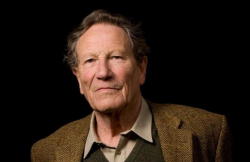A new approach
Until the mid-sixties of the twentieth century transplant surgeons matched kidney donor and patient mainly by blood type. Patients had to wait until a suitable donor was found in the center where they were treated.
Prof. Jon J. van Rood (1926-2017) from the Leiden University Medical Center in Leiden, the Netherlands obtained evidence that the HLA (Human Leucocyte Antigen) system plays an important role in the outcome of renal transplantation. Back then HLA matching was used for more than just kidney transplantation. It was Van Rood’s idea to apply it to all organs. He made this discovery through the process of transfusion. Van Rood started with kidneys because there was a shortage of dialysis capacity. Matching of the HLA type of donor and patients led to better graft and recipient survival. However, the number of HLA antigens was large, which made the probability of finding a donor with a matching tissue type for a particular patient low. This probability will increase if a donor is offered to a central organization where many patients in need for a renal (kidney) transplant are listed.
For this reason, in 1967, Van Rood founded the Eurotransplant International Foundation (Eurotransplant). Twelve transplant centers in three countries participated voluntarily by providing the information of their transplant candidates to Eurotransplant. Every donor of these centers was reported to Eurotransplant in order to select the patient with the best possible match from the waiting list. This patient-oriented allocation of organs led to an enormous improvement of the kidney graft survival.
What started as a scientific experiment soon became a foundation in which many transplant centers in several European countries participated. A period of rapid growth followed. At the end of 1970 Eurotransplant was active for 68 transplant centers in six countries: Austria, Belgium, Luxembourg, Federal Republic of Germany, the Netherlands and Switzerland. Eventually Switzerland withdrew from Eurotransplant. In 1991, after the reunification of the Federal Republic of Germany and the German Democratic Republic, East-Germany (former German Democratic Republic) joined in, followed by Slovenia in 1999, Croatia in 2007 and Hungary in 2013.
Several Eastern European countries are currently interested in cooperating with Eurotransplant. This would help them in bringing the quality of transplantation medicine to a higher level.
Rapid growth
During the seventies of the twentieth century Eurotransplant started allocating donor livers. A few years later Eurotransplant expanded its services with the allocation of hearts and pancreas. In 1988 the allocation of lungs started and since 1999 intestines are exchanged although at a small scale.
Democratization
Starting in 1994, the organization of Eurotransplant underwent a process of democratization. In 1996 a General Assembly was installed, thus giving the transplant centers a voice in managing Eurotransplant. From then on, the members of the Advisory Committees, installed to advise the Board on optimizing the day to day activities (for instance, organ allocation) of Eurotransplant, were selected by the national transplant societies.
After leading Eurotransplant for almost thirty years Prof. Dr. Jon J. van Rood resigned as President and was succeeded by Prof. Dr. Yves Vanrenterghem, until he retired in 2005 and Prof. Dr. Bruno Meiser was elected.
The next step in the process of democratization was the formation of the Eurotransplant Council in 2009. The Council strengthens the bonds within Eurotransplant by offering a permanent platform for the exchange of information between the national competent authorities of the member states and the Eurotransplant Board.
In 2020, a new organizational structure was implemented with a Board of Management, Supervisory Board, Assembly and several advisory Councils and Committees.
Timeline
Please note that the black dots correspond with Eurotransplant-related events.
